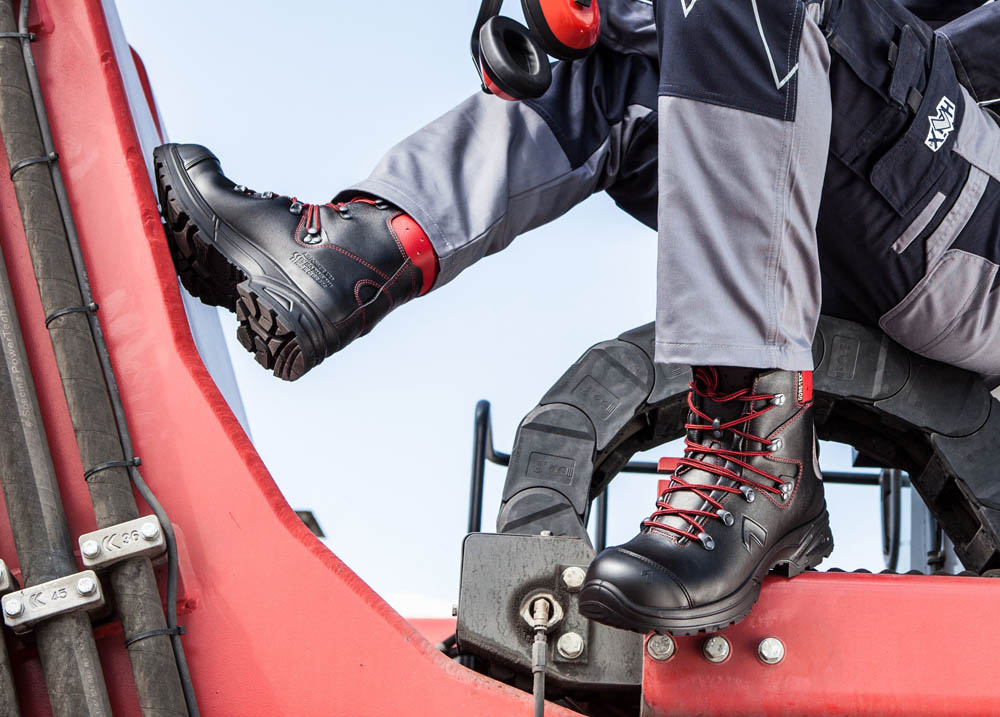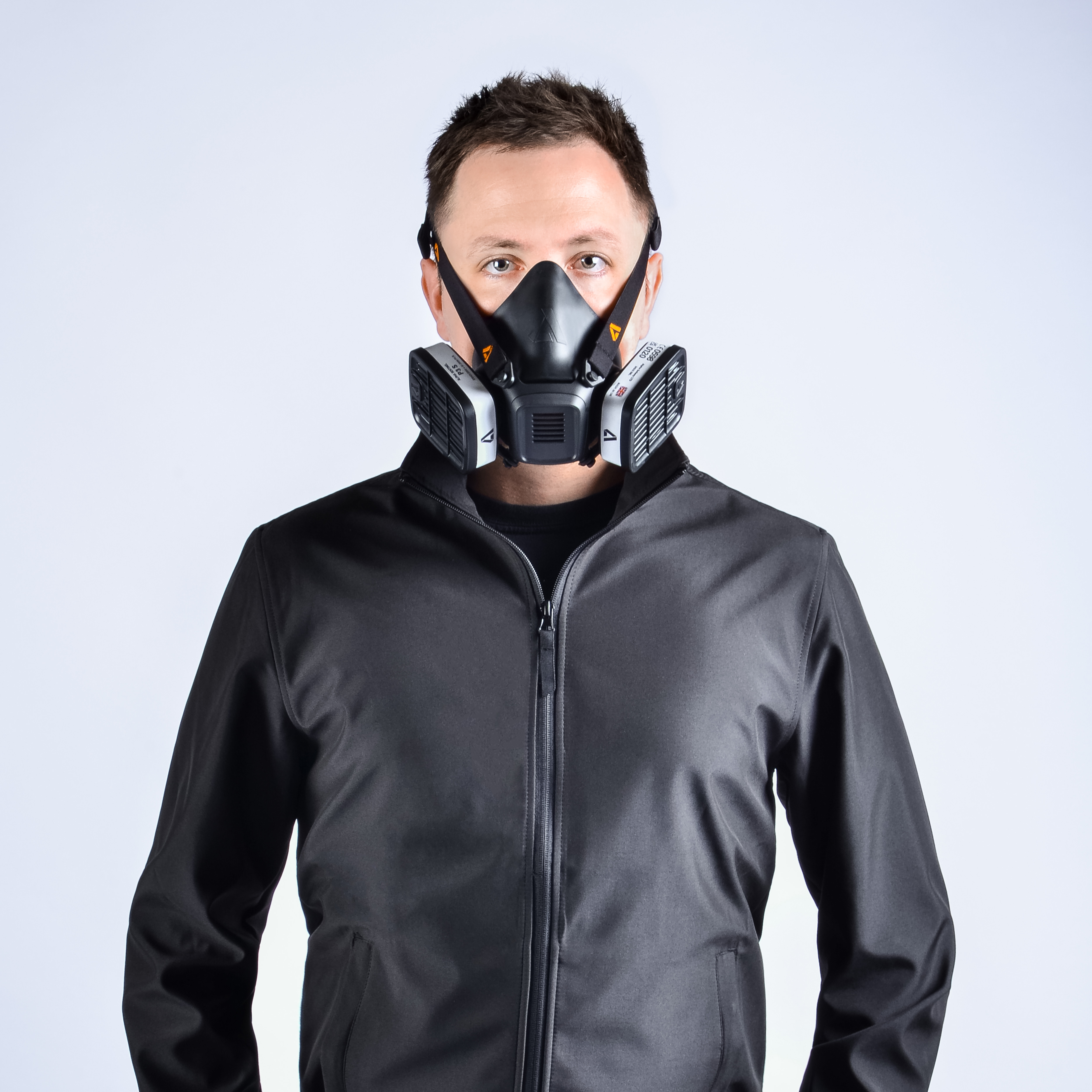How can construction and maintenance workers be sure that their temporary horizontal lifeline will save them in the event of a fall from height? And can such equipment be made easier and quicker to deploy, as well as safer? Alfonso Fernandez of MSASafety sums up the risks and challenges in this area and describes a new development which improves both productivity and fall protection.
Use of temporary horizontal lifelines is especially common in construction andindustrial maintenance work. These are notoriously dangerous occupations, as statistics from the UK Health and Safety Executive(HSE)* confirm. The construction sector saw morefatal workplace injuries than any other in 2021/22, accounting for24% ofthe total. Manufacturing followed at 18%. The most prominentaccident category – representing24% of all deaths at work – was falls from height.
In industrial environments, temporary horizontal lifelines tend to be used in locations where work at height is needed only occasionally. If there is a frequent need in one place, it makes more sense to install a permanent fall protection system. This may be the case, for example, in regular air conditioner maintenance. Temporary horizontal lifeline applications, by contrast, could include a one-off machinery repair or a servicing task required just once every few years. It would be impractical and expensive to build permanent solutions at every high point where work might potentially be required at some time.
Construction projects, by their very nature, alter in shape and height as they develop. To meet their changing needs, temporary horizontal lifelines can be continually moved into different positions.
Expanded lifeline choice
A temporary horizontal lifeline provides the anchorage for a fall protection system whose other essential components are a body harness and a connecting device. The latter, which is often an SRL (self-retracting lifeline) or a PFL (personal fall limiter), connects the worker’s harness to the horizontal lifeline.
The most basic temporary horizontal lifelines are made from webbing. Others, using rope, offer a step up in quality, while premium-quality systems use steel cable. Durability is an obvious issue. Webbing is the least durable option. It quickly becomes scratched, dirty and stained. These factors contribute to its deterioration and give the lifeline a shabby appearance which can makeusers doubt its reliability. Rope is more durable and therefore safe for longer. Cable is better still.
In developing the new MSA Temporary Horizontal Lifeline, MSA’s design engineers have opted for galvanised steel cable to maximise durability. At the same time, they have addressed several problems typical of traditional cable-based temporary horizontal lifelines. The result is a product which can be considered the first of its kind.
In particular, the designers havereplaced complex, time-consuming set-up processes – typically requiring more than one pair of hands – with a faster, simpler approach. This allows users to spend more time on the workthey are there to do, and less on setting up, soproductivity losses are minimised. The MSA lifeline also has features which take the guesswork out of correct locking and tensioning, and it comes with user-friendly charts for quick determination of required clearances. Its innovative, mobility-enhancing design even allows two connected workers to pass each other on the line without temporarily disconnecting.
Time savings in installation
A temporary horizontal lifeline must be connected to a firm anchor point at each end. The anchor points are normally beams or other solid structural features of a building. Attachment is usually via anchor straps.
Once attached, the lifeline needs to be locked and tightened. Until now, these havebeen slow proceduresinvolving use of nuts, bolts and wrenches. With the MSAsolution, toolless locking and tensioning mechanisms are built into the lifeline. There are no tools or other separate items to carry and potentially drop or lose. In addition, both mechanisms are at the same end of the lifeline, so there is no longer a need to walk back and forth when installing it.
Tests show that installation of the MSA Temporary Horizontal Lifeline is 75% faster compared to traditional cable systems. That saving, multiplied across the many days on which the lifeline is set up in different locations, frees up substantial amounts of productive time.
Confident locking and tensioning
A further issue to address is assurance of firm locking and correct tensioning. If the lifeline is not locked tightly enough, it might slip from the anchors. A loosely tensioned lifeline will deflect more than a sufficiently tight one if a worker falls. This creates potential for impact with the ground or other structures.
In webbing-based systems, locking and tensioning generally involve tightening until the worker can no longer turn the wrench further. Whether the right level of tension has been reached is a matter of judgement. Some rope or cable systems have a drum which is designed to slip when the lifeline becomes tight.
With the new MSA system there is absolute certainty. Coloured visual indicators on itsinbuilt locking and tensioning devices clearly show whether the system has been set up correctly and is ready for use. This level of simplicity and confidence is very unusual in the market.
Quick decisions on clearance
Another aspect on which users want to be confident is how much clearance height is needed in the set-up for safety in the event of a fall. This needs to allow for lifeline deflection and other variables. To date, it has required calculations combining data from the separate lifeline, connecting device and harness user manuals – adding extra time to the job.
MSA has now solved this difficulty by providing its lifeline with easy-to-use charts for which the calculations have already been made. These take into account factors like the number of users connected (one or two), the distance between the anchor points, the type of connecting device used, and whether the lifeline is at foot, chest or overhead level. They quickly point the user to the required clearance for each set of circumstances.
Improved mobility
When two workers are connected to the same horizontal lifeline, a problem commonly arising is that they may need to pass each other from time to time. To do so, one user must disconnect temporarily from the line – becoming unprotected until connection is restored.
MSA has solved this with its patented bypass shuttles. These maintain 100% tie-off during passes, so mobility is increased without sacrificing safety.
The ease and speed with which temporary horizontal lifelines can be handled, installed, uninstalled and moved between locations is another key consideration. Traditional cable systems can be heavy and difficult to manoeuvre. Their installation is slow, as already mentioned, and may require two workers.
The MSA system uses flexible, lightweight cable and can be easily carried and set up by one person. Its simplicity, flexibility and adaptability to different circumstances make it ideal for constantly changing work sites and intermittent maintenance tasks.
Durability, strength and true value
Web-based and rope-based systems are of course lighter, but the strength and durability of MSA’s galvanised steel cable gives workers and their managers greater assurance. This is especially important when lifelines face abrasive, corrosive, dirty or polluted conditions, like those typical of construction and industrial maintenance applications. The MSA lifeline is also tested to a capacity of 140 kg, which exceeds the EU standard of 100 kg.
Unsurprisingly, the MSA Temporary Horizontal Lifeline ishigher priced than a more basic product,but buyers should always look for true and lasting value when comparing safety equipment. Greater durability, in particular, brings down the whole-life cost of a high-quality system compared to a cheaper alternative. The new MSA lifeline also pays back through higher productivity, with its fast, single-handed installation.
Ultimately, however, no price can be put on workers’ lives. Employers and managers choosing the safest option can rest assured that they are minimising risks and investing in the wellbeing of their workforce. And given the choice, anyone who actually works at height would surely opt for that assurance too.
As along-established leader in workplace safety solutions, these thoughts have driven MSA’s non-stop search for improvements. Through its new Temporary Horizontal Lifeline, MSA has found yet another way to make sure workers get back to their families at the end of the day.
For further information on the new MSA Temporary Horizontal Lifeline, click here.










